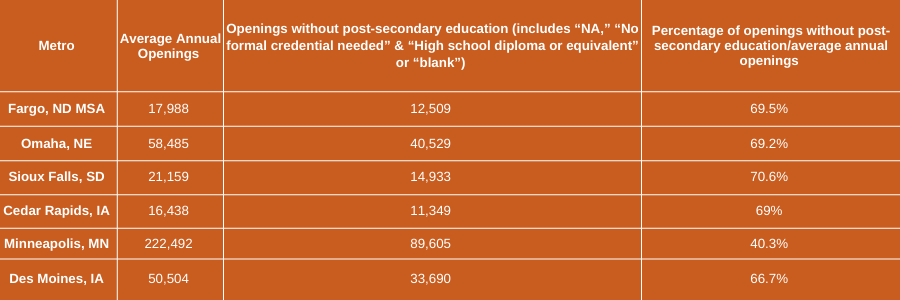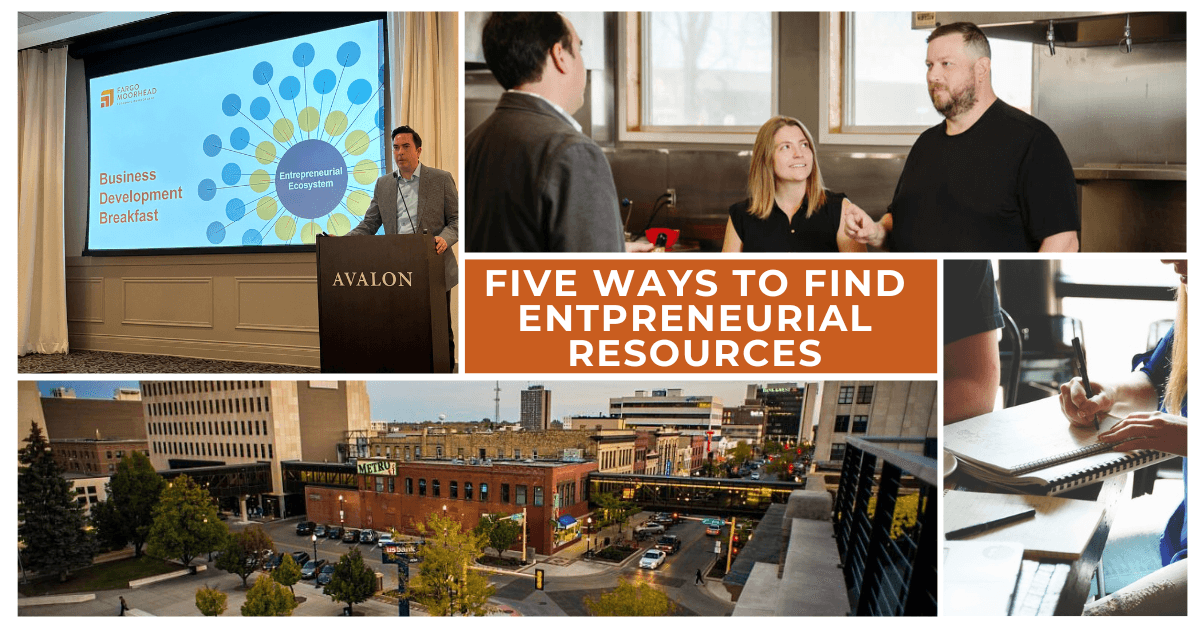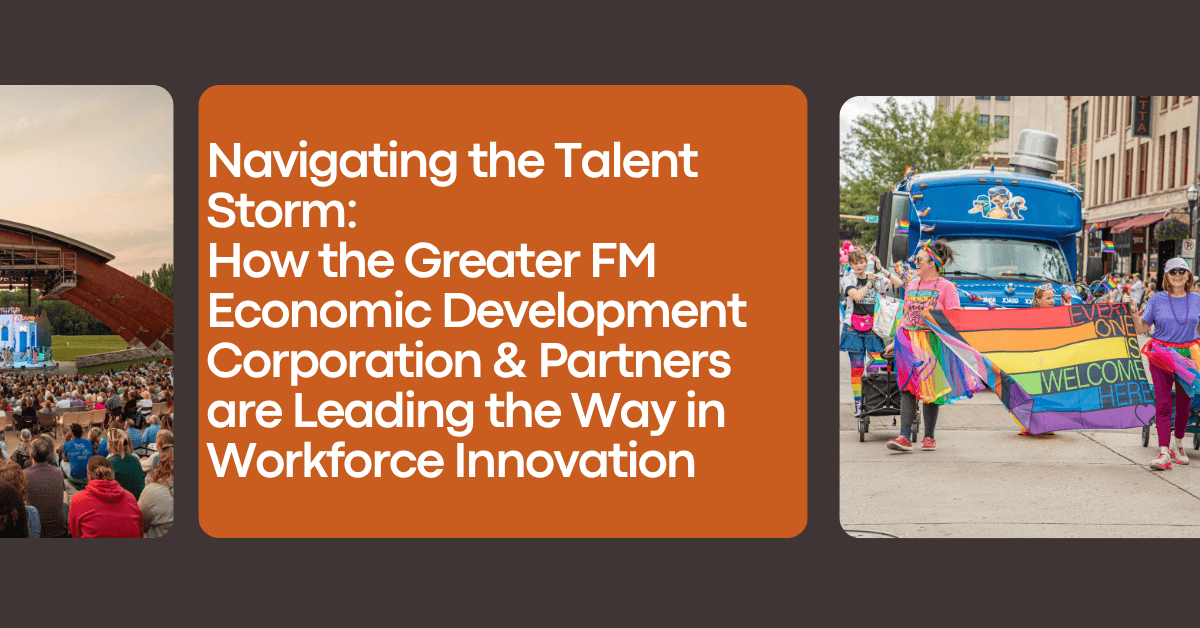A Glimpse Into Our Work, a Quick Data Request
Data-driven decisions have been the GFMEDC’s go-to for years. But what does this really look like in the everyday swing of things?
Hi there! I’m Sammi Rowe, the GFMEDC’s Vice President for Research and Project Management. In this blog, I’m going to share a quick data request I completed recently for the GFMEDC’s President and CEO, Joe Raso.
Here’s Joe’s request in a nutshell: He wanted to understand how many of the job openings in comparative Midwest metros don’t require education beyond high school. I needed to compare this data to the same data for the Fargo-Moorhead Metro to determine if there were any key takeaways.
Here’s what I did to complete the request:
Our data tool Lightcast provides an average annual job openings number per metro, so I gathered those numbers for the following metros:
- Omaha, NE
- Sioux Falls, SD
- Cedar Rapids, IA
- Minneapolis, MN
- Des Moines, IA
- Fargo Moorhead MSA (for comparison data)
Then I used our data tool to filter for the occupations that didn’t require education beyond high school. With the number of occupations not requiring post-high school education and the total number of openings, I was able to compare the percentages below:

Key takeaways:
- With the exception of Minneapolis, the percentage of open jobs not requiring education past high school across competing Midwest metros hovers around 69%.
- This tells us that the number of limited-skill occupations in our metro is in line with other metros we are competing against.
- The Minneapolis data indicates that there are fewer open jobs utilizing talent with limited education, and more open jobs requiring education beyond high school.
Why is this data important to know? For the Greater Fargo Moorhead region, 30+% requiring more education still equates to more than 6,000 positions on an annual basis, and based on our region’s already high labor force participation rate (highest in the nation), it is critically important that we still focus on attracting skilled people into our region to fill many of these positions.
In addition, we know that many of the positions not requiring additional education are in the service industry, and history shows that they are not being filled, thus limiting many companies ability to provide services to potential customers, such as in the food service sector. A meaningful solution is going to be continued automation of this work, and thus, the need for public policy that can support more automation because these positions are simply not going to be filled by humans.
Lastly, it is important to do comparisons against our peer markets to truly understand if our particular labor market needs are different than others. In this case, we can see that a majority of the markets we may compete with have a similar workforce make-up. Having this comparison data can help us to message and program in a more meaningful way.


